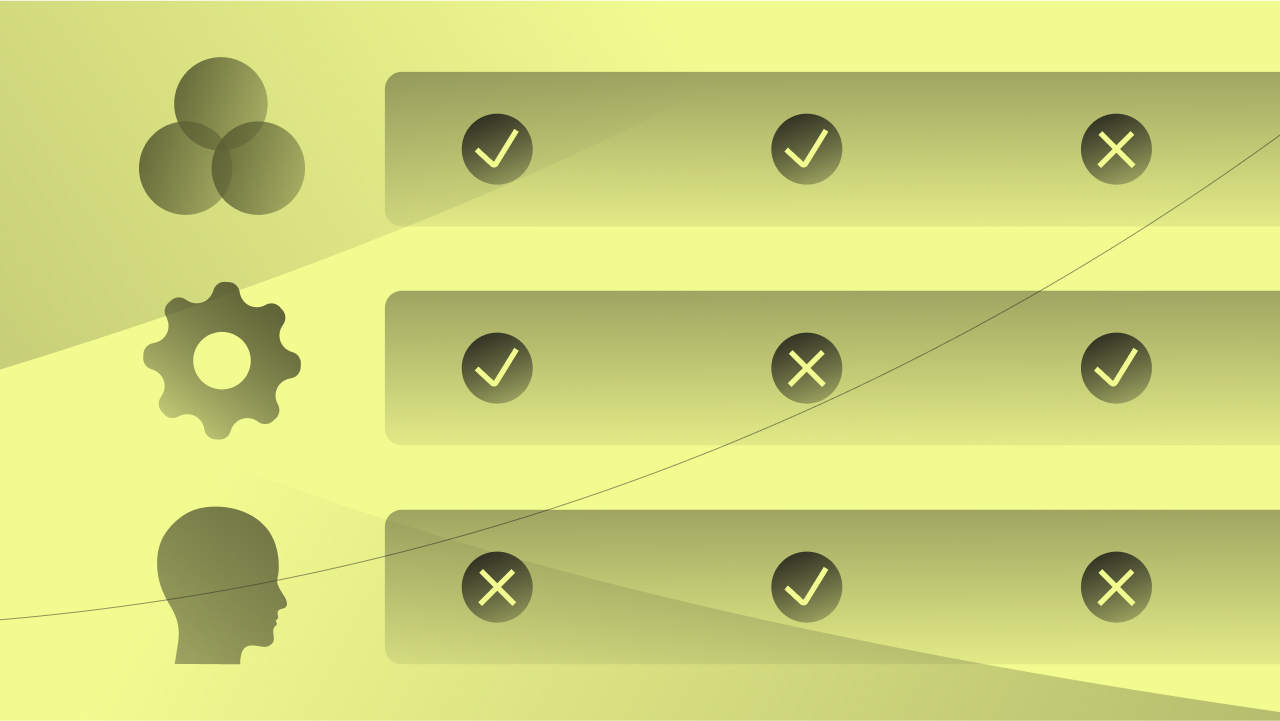
Key Takeaways
The automation landscape has evolved through three distinct stages: RPA, Intelligent Automation (IA), and Agentic Process Automation.
- What are the stages: RPA is brittle, task-based bots. IA enhances RPA with AI capabilities. Agentic Process Automation is the most advanced, orchestrating entire end-to-end business processes using autonomous, goal-driven AI agents.
- The business impact: Understanding these stages is key to choosing a truly modern and scalable solution.
- The key takeaway: Agentic automation is process-centric, more resilient, and represents a true leap toward building an autonomous enterprise.
Even as the business landscape constantly evolves, automation has become a cornerstone for organizations worldwide, the terminology surrounding it can sometimes be confusing. Businesses often hear terms like Robotic Process Automation, Intelligent Automation, and the newer concept of Agentic Process Automation. While all aim to streamline operations, understanding the core distinctions between Intelligent Automation, RPA and Agentic Process Automation is crucial for any leader looking to invest wisely in the future of their enterprise.
The journey of automation has progressed significantly from simple script execution to complex, adaptive systems. Initially, Robotic Process Automation emerged as a powerful tool for automating repetitive, rule-based tasks. However, as business processes grew more intricate and data became less structured, the need for more intelligent solutions became apparent. This led to the rise of Intelligent Automation, which combines RPA with Artificial Intelligence to handle more cognitive tasks. Now, a new frontier is emerging with Agentic Process Automation, promising even greater autonomy and adaptive intelligence. For decision-makers, grasping the nuances of Intelligent Automation vs RPA vs Agentic Process Automation means making informed choices that drive true digital transformation.
What is Robotic Process Automation Software?
Robotic Process Automation (RPA) represents the foundational layer of modern business automation. At its heart, RPA software enables organizations to automate routine, high-volume, and rule-based tasks by mimicking human interactions with digital systems. Imagine a software robot logging into applications, extracting data, copying and pasting information, and performing calculations—all without human intervention. This is what RPA does.
RPA excels at tasks that have clear, predictable steps and where data is structured. Examples include invoice processing, customer onboarding, data migration, and report generation. The primary benefit of RPA is its ability to deliver quick wins by automating existing processes without requiring complex system integrations or changes to underlying IT infrastructure. This non-invasive approach makes RPA a popular starting point for many companies embarking on their automation journey. However, a key limitation is its inability to handle unstructured data, interpret meaning, or make complex decisions that require human-like judgment. The fundamental aspect of Automation vs RPA lies in RPA’s strict adherence to programmed rules.
What is the Difference Between RPA and Intelligent Automation?
The core difference between RPA and Intelligent Automation lies in the addition of cognitive capabilities provided by Artificial Intelligence. While RPA is about doing based on pre-defined rules, Intelligent Automation is about thinking and understanding as it does. This integration of AI elevates automation beyond simple task execution.
Intelligent Automation combines Robotic Process Automation with technologies such as Machine Learning ML, Natural Language Processing NLP, Optical Character Recognition OCR, and Intelligent Document Processing IDP. This combination allows IA systems to process unstructured data (like text in emails or images), interpret context, and make data-driven decisions that were previously reserved for human intelligence.
For instance, an example of RPA & automation AI would be an intelligent automation system that processes incoming customer emails. The AI component NLP would understand the email’s intent (e.g., a refund request versus a product inquiry), extract relevant information like order numbers using IDP, and then pass this structured data to the RPA bot. The RPA bot would then execute the specific actions in the backend system to process the refund or forward the inquiry to the correct department. This clearly shows Robotic process automation vs intelligent automation.
Another example involves processing invoices. While RPA can automate entering data from a perfectly formatted digital invoice, an Intelligent Automation system with OCR and ML can handle scanned invoices that might be skewed, contain handwritten notes, or come in various formats. The AI intelligently extracts the necessary information, and the RPA bot then enters it into the ERP system. This is a crucial distinction in the RPA vs intelligent platform debate. Intelligent robotic automation signifies this fusion of capabilities.
Exploring Agentic Process Automation
While Intelligent Automation marks a significant leap from traditional RPA, Agentic Process Automation (APA) represents the next evolutionary stage. Agentic Process Automation introduces a layer of true autonomy, reasoning, and self-correction that distinguishes it from previous automation paradigms. It’s about moving from simply following rules or interpreting data to systems that can understand broader goals, reason through situations, and even adapt their strategies to achieve desired outcomes.
The core concept of Agentic Process Automation is an “agent“: a software entity that perceives its environment, makes decisions, and takes actions to achieve specific goals, often without explicit step-by-step programming for every scenario. These agents can break down complex problems into sub-problems, explore multiple paths to a solution, and even self-correct when faced with unexpected situations. This is fundamentally different from a typical RPA bot that executes predefined steps or even an Intelligent Automation system that requires human oversight for complex exceptions.
Consider a multi-faceted business objective. An Agentic Process Automation system would not just execute a predefined workflow. It would understand the goal (e.g., “reduce customer churn by 10 percent”). It would then autonomously identify relevant data sources, analyze customer behavior patterns, formulate strategies (e.g., offer personalized discounts, send proactive support messages), execute those strategies through various digital channels, and continuously monitor the outcome, adjusting its approach as needed. This self-directed behavior sets Agentic Process Automation apart.
Key Differences between Intelligent Automation, RPA and Agentic Process Automation
To fully grasp the landscape of modern automation, it is essential to understand the distinct characteristics and capabilities of each. The progression from basic Robotic Process Automation to sophisticated Agentic Process Automation involves increased intelligence, autonomy, and the capacity to handle greater complexity.
- Robotic Process Automation RPA focuses on rule-based, repetitive task automation. Its decision-making is limited to strict predefined rules, it works best with structured data, and it handles simple, high-volume tasks with very low autonomy.
- Intelligent Automation combines RPA with AI. Its decision-making is augmented by AI-driven insights, allowing it to process unstructured and semi-structured data. IA handles more complex, dynamic processes requiring interpretation and basic decisions, offering moderate autonomy by learning and adapting within defined parameters.
- Agentic Process Automation involves autonomous, goal-oriented agents capable of advanced reasoning, planning, and self-adaptive decision-making. It processes all data types, drawing inferences to achieve high-level objectives. APA manages highly complex and strategic processes with significant learning and self-management capabilities, operating with high autonomy.
The evolution from RPA to Intelligent Automation to Agentic Process Automation shows a clear progression in terms of intelligence, autonomy, and the types of problems solvable by automation. Intelligent robotic automation is a stepping stone to full agentic capabilities. The conversation around RPA vs Agentic Process Automation highlights this leap in capabilities.
Use Cases and Real-World Applications
Understanding these technologies is best illustrated through their practical applications.
Pure RPA Use Cases involve tasks like automating data entry from standardized forms into an ERP system, generating routine financial reports from multiple structured data sources, or processing employee onboarding by updating HR systems and sending automated emails.
Intelligent Automation Use Cases extend to automating customer service inquiries by understanding natural language queries, extracting customer details from emails, and providing automated responses or routing to the correct human agent. This showcases Robotic process automation vs intelligent automation in action. Other examples include processing complex insurance claims by reading policy documents and cross-referencing with claim details, or automating accounts payable by intelligently extracting data from diverse invoice formats, validating against purchase orders, and initiating payment workflows.
Agentic Process Automation use cases represent a higher level of strategic automation. An APA agent could monitor global supply chain conditions (like weather or market demand), proactively identify potential disruptions, and autonomously re-route logistics or adjust inventory levels to maintain efficiency. Another use might be autonomous customer lifecycle management, where an APA agent, given the goal of “maximize customer lifetime value,” continuously monitors customer interactions, predicts churn risk, and autonomously initiates personalized campaigns or proactive support outreach, adapting its strategy based on real-time customer responses. This highlights Agentic Process Automation’s strategic value.
Choosing the Right Automation Strategy
Deciding between RPA, Intelligent Automation, or Agentic Process Automation depends entirely on the specific needs, complexity of processes, and strategic goals of an organization.
For simple, highly repetitive, and rule-based tasks with structured data, traditional Robotic Process Automation remains a cost-effective and efficient solution. It’s an excellent starting point for many automation initiatives, delivering rapid return on investment.
When processes involve unstructured data, require interpretation, or necessitate more complex decision-making, Intelligent Automation is the appropriate choice. The combination of RPA with AI capabilities like NLP and ML unlocks significant value by extending automation to cognitive tasks, bridging the gap between basic task execution and human-like understanding. This is where Robotic process automation vs intelligent automation becomes a critical strategic decision.
For organizations aiming for truly autonomous operations, continuous self-improvement, and strategic goal achievement without constant human intervention, Agentic Process Automation represents the future. These systems are designed to handle extreme complexity, adapt to unforeseen circumstances, and drive outcomes based on high-level objectives. This is the cutting edge of automation. The decision here is often about going beyond RPA vs Agentic Process Automation to embracing comprehensive intelligent systems.
The Path Forward: Intelligent Automation for Complex Work?
The evolution from Robotic Process Automation to Intelligent Automation, and now to Agentic Process Automation, illustrates a clear trend toward increasingly sophisticated and autonomous systems. Each stage builds upon the last, offering greater capabilities to address the complexities of modern business. Understanding Intelligent Automation vs RPA vs Agentic Process Automation is not just about technology but about strategic business design.
For enterprises grappling with intricate processes, the future lies in intelligent, adaptive platforms. Solutions that orchestrate highly advanced forms of intelligent robotic automation are crucial. These platforms provide a secure and scalable environment for automation that adapts to real-world business needs, moving beyond simple task execution to achieve complex, strategic objectives. They empower businesses to not only automate existing workflows but also to discover new efficiencies and opportunities, driving real transformation in how work gets done. The strategic deployment of the right automation mix, leveraging the strengths of each approach, is paramount for success in the dynamic landscape of the future.
Discover the Power of Kognitos
Our clients achieved:
- 97%reduction in manual labor cost
- 10xfaster speed to value
- 99%reduction in human error








